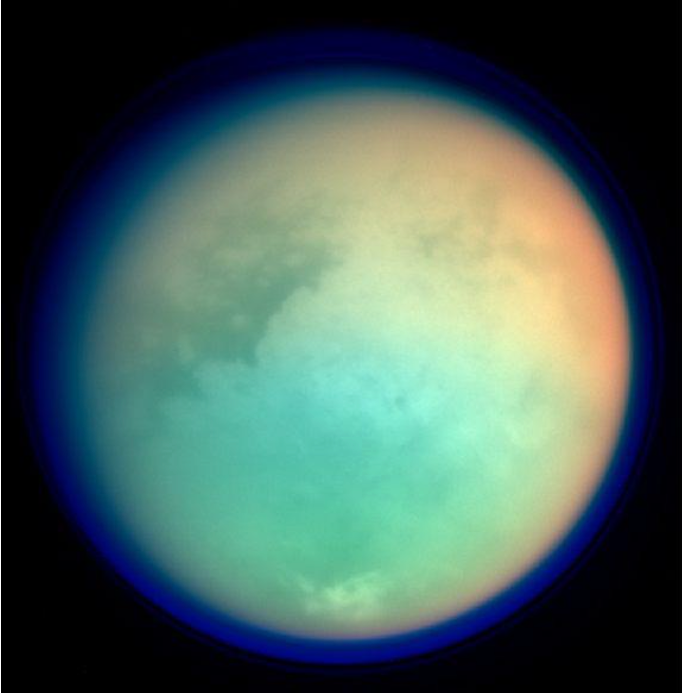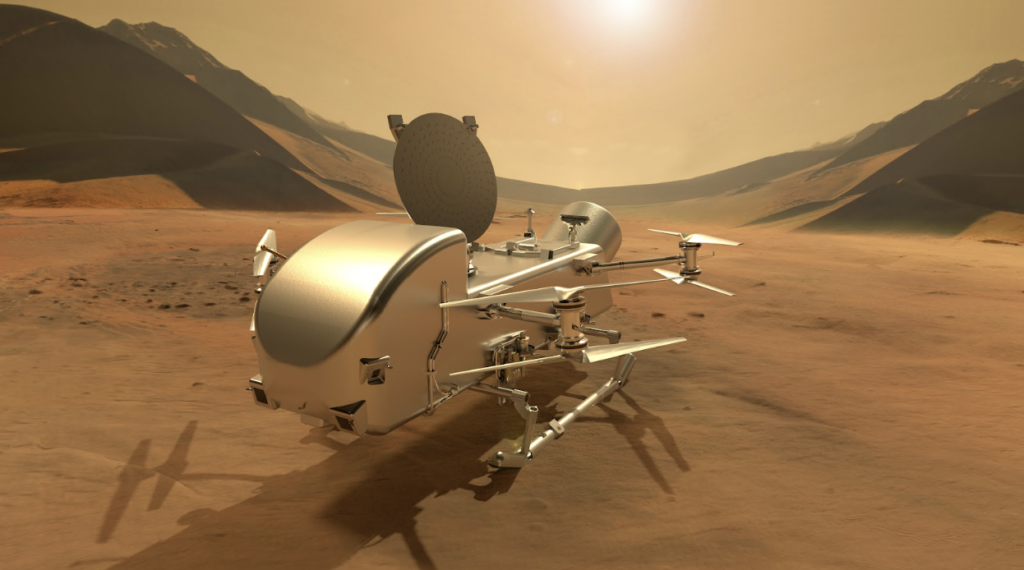Dragonfly: A Rotorcraft Lander at Titan by Dr. Catherine Neish
Dragonfly Destination:

Titan, the second largest moon in the solar system, has captured the eyes of astrobiologists and geologists alike. It has oceans of liquid methane, a crust of water, and a thick atmosphere with organic gasses present. Titan is the biggest Saturnian moon, larger than any of the dwarf planets in our solar system. Some of its properties lead scientists like Dr. Catherine Neish to believe it could teach us about the origins of life.
The Mission:
Dr. Catherine Neish, an Associate Professor at University of Western Ontario, is involved in the New Frontiers: Dragonfly mission. The Dragonfly mission intends to deploy an octocopter scientific instrument (pictured below) on Titan. Moreover, to study its properties by collecting and examining samples. The craft has various instruments that observe conditions on Titan. Particularly, looking for signs of life in impact craters. With an emphasis on impact craters, Dr. Neish uses radar observations to study Titan’s surface.

As Dr. Neish explains, energy (sunlight, etc.) and solvents (like water or methane), with CHNOPS (carbon, helium, nitrogen, oxygen, phosphorus, sulfur, found in Titan’s sand and atmosphere) are ingredients needed for life.
She mentions, “Titan likely has CHNO, we’re not sure there’s much phosphorus or sulfur there, but … you can do a lot of interesting chemistry with just these four elements.” The interesting chemistry that can be done with liquid water in impact craters on Titan creates amino acids, which are the building blocks of life.
Titan not only has some of the most interesting geological properties of any moon in our solar system, but has opportunity for life.
To watch the recording of her First Friday presentation visit:
To watch any past lectures, go here.
Article written by Robin Matson, AstroTAC member of NASA CIDSRSN
